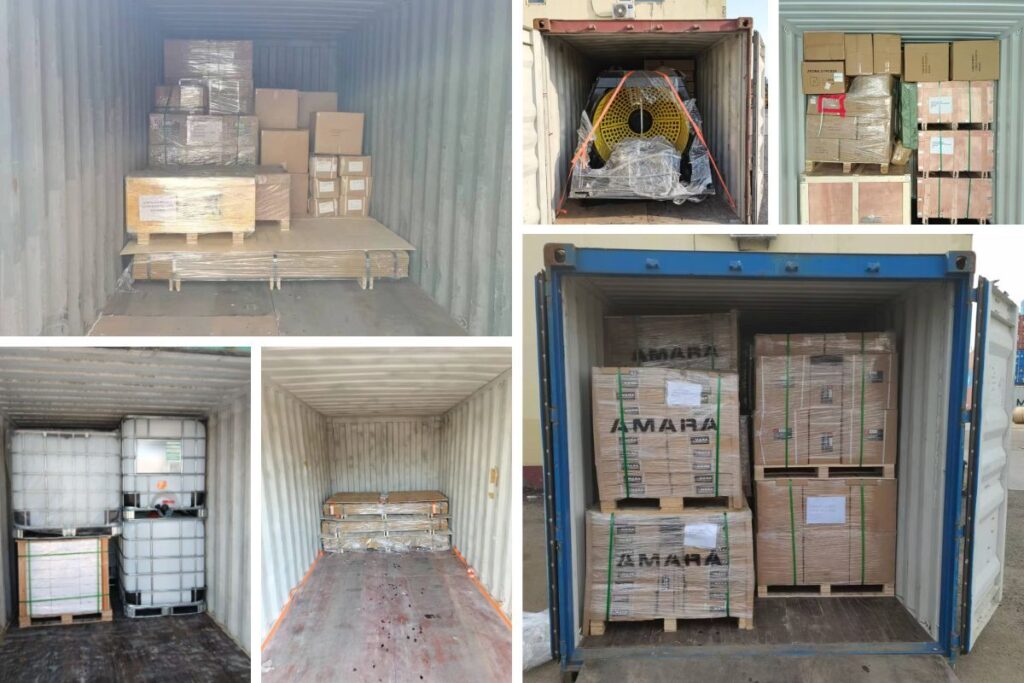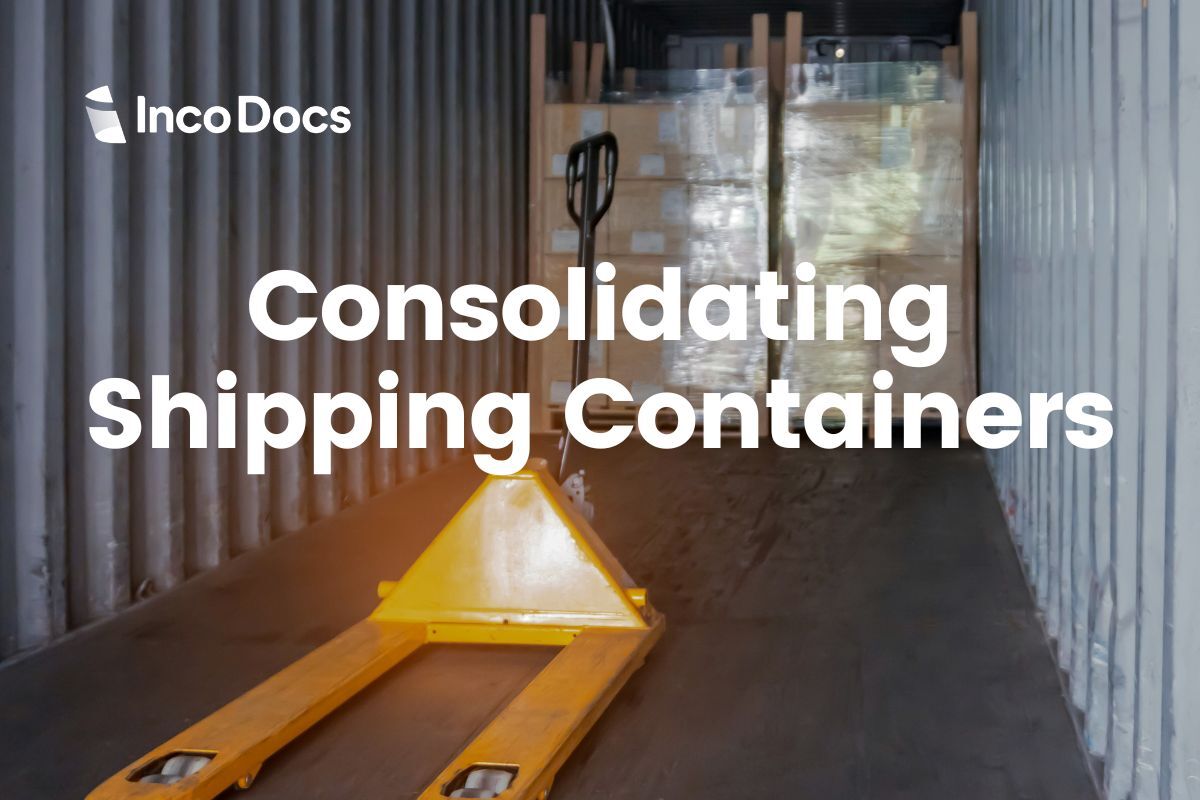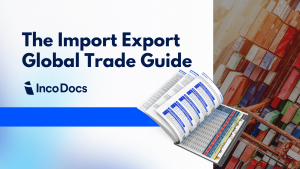Shipping container cargo consolidation helps improve efficiency and lower costs in transportation. It involves combining multiple smaller shipments from different shippers into one full container load (FCL). This strategy is typically used in international trade to handle smaller cargo volumes. This can also be referred to as freight consolidation or cargo consolidation.
What is the benefit of consolidating your own shipping container?
When importers buy products from international suppliers, their shipments might not be large enough to fill an entire container. This is where Less than Container Load (LCL) shipping comes in, allowing smaller shipments to share space in a container with goods from other businesses. While it’s convenient for smaller shipments, the combined costs of international ocean freight, customs clearance, and local handling fees can make LCL more expensive than using a full container.
If most of a shipping container can be filled with product, it works out much more cost effective to ship a 20’ container, rather than sending the goods by LCL cargo. This will reduce the landed cost of each product. Learn more about how to calculate the landed cost of imported products here.
Another benefit of consolidating your own shipping container is that the products inside will not have to be unloaded from the container until it reaches it’s final destination. Products shipped by LCL cargo and more often unloaded and then loaded into other containers before it reaches it’s final destination, increasing the risk of damage along the global supply chain.

How to arrange to ship a consolidated shipping container
The process of arranging your container to be consolidated does involve more processes, however if it is properly planned out and if you use a company that is experienced in consolidating freight into shipping containers, it can be a very helpful way for importers to reduce their landed costs of imported products.
Here is a basic example of how importers can consolidate their own shipping containers:
- The buyer (importer) places 4 x Purchase Orders with 4 different factories in China.
- Each supplier delivers the goods to a central location, i.e. the ‘consolidator’.
- The consolidator receives 4 deliveries and loads all of the products from the 4 suppliers into 1 x 20’ container.
- The consolidator will complete the relevant paperwork, then send the container to the port, ready to be loaded on board a vessel for export.
How to Choose the Right Consolidator to Pack Your Shipping Containers
Before organizing the freight consolidation of your shipping container, first you must understand key processes to properly manage the process to minimize confusion ensure a smooth process.
Most cargo is exported from one supplier into one shipping container, which is straightforward compared to consolidating your own shipping containers. In the case of consolidating shipping containers, you will need to find a company that is experienced and specializes in consolidating containers for export. If you are dealing with a freight forwarder, they may deal with agents in the country of export that specialize in container freight consolidation.
Suitable, Central Location
First, a consolidator must be relatively close to each of the supplier’s factory or warehouse locations. The further away a consolidator is from your suppliers, the more cost and time it will take to get each supplier’s products delivered to the consolidator’s warehouse. Most consolidator’s warehouses will be located close to the port of loading, to ensure that when containers are packed and ready for export, the container can be delivered to port with minimal delays.
Pricing of Freight Consolidation Services
As always, you should contact multiple companies to compare pricing for their services. However, it’s important that you do not choose a consolidator based on pricing alone. Because the container consolidation process involves so many extra moving parts, dealing with an experienced consolidator will reduce the risk of the many potential costly delays, damages and problems that can occur. Dealing with an experienced consolidation partner is worth paying extra.
Customer Service and Responsiveness
During the container cargo consolidation process there will be many times when importers, exporters and other parties need to speak with the consolidator to confirm deliveries, container planning, container loading etc.
Get an insight into their customer service, operations and knowledge levels. Speak to someone at each potential consolidator and give them detailed information into your supplier networks, your cargo shipment frequency and any other requirements. If the people you are speaking can not answer your questions and provide you the right information, they are likely not the partner that you are looking for.
The Cargo Shipment Consolidation Process
As mentioned earlier, arranging the freight consolidation of a shipping container requires additional processes. Below is an overview of the processes to follow, from dealing with suppliers, through to the container being loaded on board the vessel for export.
Clear Supplier Communications
Before placing orders, the buyer and seller should first understand and agree key details, which should be detailed on the Purchase Order and Proforma Invoice documents.
Agree on Incoterms®
Before placing orders with suppliers, the buyer and seller should have agreed on the Incoterm® that the products will be sold. Learn about the different Incoterms® here.
When arranging consolidated containers, it’s usually easier if suppliers agree to the FCA (Free to Carrier) Incoterm®, as that means the supplier agrees to pay to send the products to the consolidator’s location and that the supplier will also cover the applicable export duty, taxes and export customs clearance processes involved to have the goods cleared and ready for export.
If the Incoterm® agreed is EXW (Ex-Works, or Ex-Warehouse), then the buyer is responsible for paying the transport costs from the supplier’s warehouse/location to the consolidator’s location. The buyer will then have to arrange and pay for all of the applicable export duty, taxes and export customs clearance processes to have the goods cleared and ready for export.
Delivery Timeframes and Lead Times
The buyer and seller should also agree on the approximate date that products are required to be delivered to the consolidator. As there are multiple suppliers involved in one shipment, it’s critical that suppliers deliver within a set timeframe to avoid delays and rolled shipments. During the supplier’s manufacturing process, buyers should check in to ensure that the products will still be delivered within the agreed timeframe.
Export Packaging
It’s important to ensure that each supplier agrees to arrange strong, export grade packaging to protect the cargo from damage throughout it’s journey along the global supply chain. When loading shipping containers, many different types of products and packaging is used, which is often stacked or squeezed into the container. Strong packaging will decrease the risk of damages.
Requesting photos of packaged products at each stage of the supply chain will give you a chance to understand the point at which damage has occurred. Ask the supplier to send you photos of the finished packaging before it leaves the warehouse, and ask the consolidator to take photos of the packaging on arrival at their warehouse, and after the goods have been loaded inside the container. This way it will give you an indication of which party is liable for damaged cargo.
Planning and Loading Consolidated Shipping Containers
Before planning your orders with each supplier, you should have an accurate understanding of the overall size and weight of the products so that you can ensure that all cargo will actually fit inside the shipping container. Learn how using container loading software helps shippers to accurately calculate the loading and stuffing of shipping containers.
By planning the loading of shipping containers, you can communicate the loading instructions to the consolidator to ensure that all cargo is correctly loaded, strapped and ready for safe shipment. Don’t assume that the consolidator will load cargo correctly, give detailed instructions on which packages you want loaded first, and which packages should be top-loaded, to avoid unnecessary damages.
Packing Lists and Export Documentation
Each supplier must provide detailed export documentation when the goods have been shipped. As different products from different suppliers will be loaded inside the same container, the supplier should detail exactly the type and quantity of products and packaging used on the Commercial Invoice and Packing List documents.
Additionally, each supplier should ensure that all packages are clearly marked with large, visible shipping labels so that the consolidator can easily identify the cargo to be loaded in the container. Detailed packing lists and shipping labels will also make the cargo easy to identify during the container unpacking process.
If packing lists or shipping labels are wrong, incomplete or confusing to interpret, it could cause products to be delivered to the wrong final destination, causing unnecessary delays and additional transport costs.
Conclusion
In Summary, consolidating shipping containers can be beneficial to reduce the landed cost of imported products, and also reduce the risk of damage along the global supply chain.
Consolidating your own shipping containers is more complex, however if you do your research and manage the process correctly your business will benefit. Make sure that you plan the container loading, use strong export packaging, communicate your requirements to all parties involved and only deal with an experienced consolidator to ensure a smooth container freight consolidation process for your cargo shipments.







